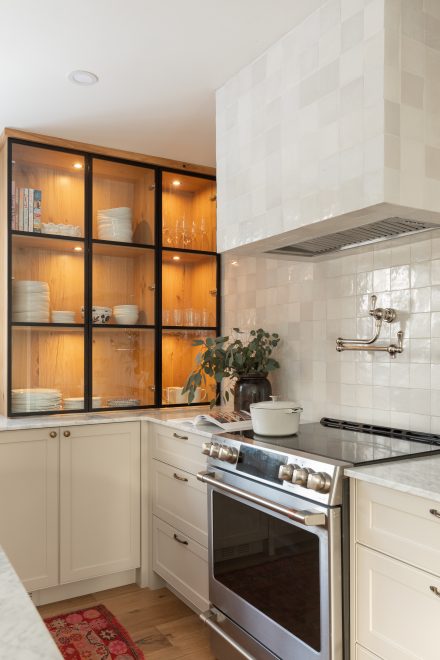
Hello, it’s a great day to start a project.
Embracing Japandi is not just a style choice: it's a way of thinking, reflecting, and experiencing space.
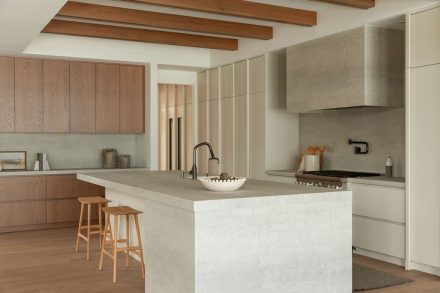
The Japandi style is more popular than ever. This hybrid aesthetic, born from the fusion of Scandinavian functionality and Japanese elegance, captivates with its balance. Its origins trace back to the mid-19th century, when Japan reopened its borders after two centuries of isolation, marking the beginning of a cultural and aesthetic exchange between Japan and the Nordic countries. This dialogue gave rise to a refined design philosophy where simplicity meets warmth, functionality meets serenity, and Zen meets hygge.
The term Japandi—a contraction of Japan and Scandi—embodies the union between these two cultures, which share a taste for simplicity, natural materials, and interiors that are pleasant to live in. And it seems the world is increasingly charmed by the vision. A quick glance at Google Trends confirms it: the term “Japandi” continues to gain popularity, especially when it comes to kitchens.
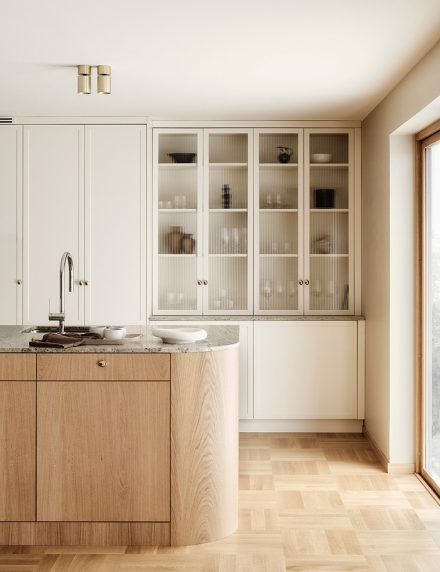
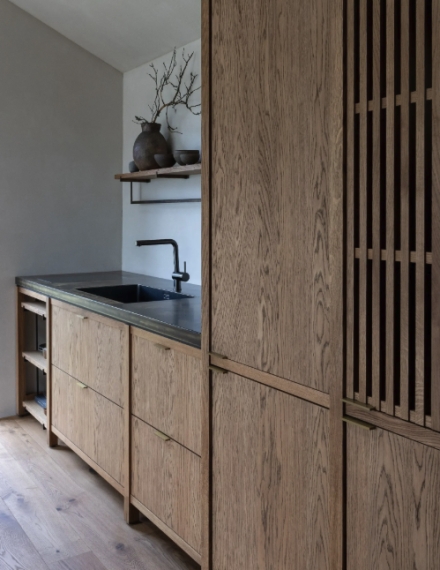
In a world saturated with stimuli, sounds, and screens, the need for visual calm and tranquility naturally invites itself into our homes. The Japandi style responds to this need for a better life by making room for the essentials and valuing quality over quantity.
But Japandi is more than a visual aesthetic. It’s a philosophy of living and a way of inhabiting the world: living with less, but better. Each object has a function and a place. Each material tells a story. Each line has been carefully considered. Minimalism is imbued with warmth—far from cold and sterile clichés—embellished by natural textures, noble materials, and organic hues.
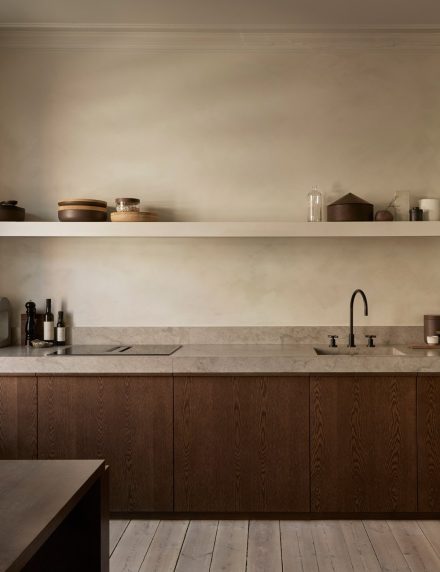
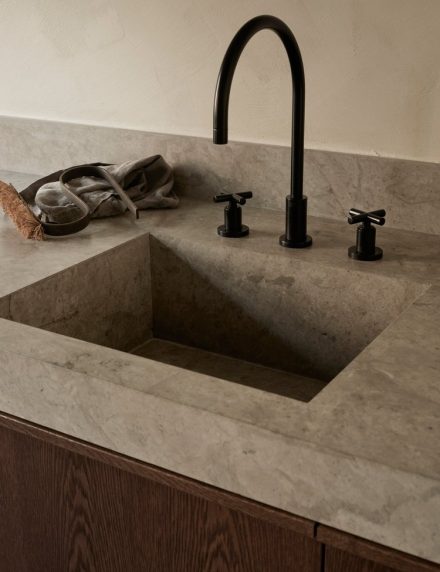
This Swedish kitchen by Nordiska Kök places materials at the center of the living space. The matte gray quartzite island stands out as a centerpiece that serves as both a workspace and a gathering place. This kitchen, designed in the Japandi spirit, is distinguished by natural materials and clean lines. The contrast between natural oak and quartzite adds subtle depth and warmth to the overall look. The built-in appliances and large surfaces contribute to a sense of calm and coherence. The natural light that bathes the room enhances the textures and volumes, highlighting the thoughtful use of space. The result is a quiet harmony, truly faithful to the Japandi essense.
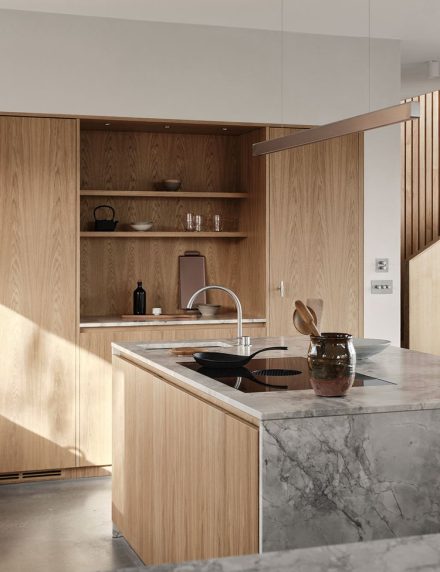
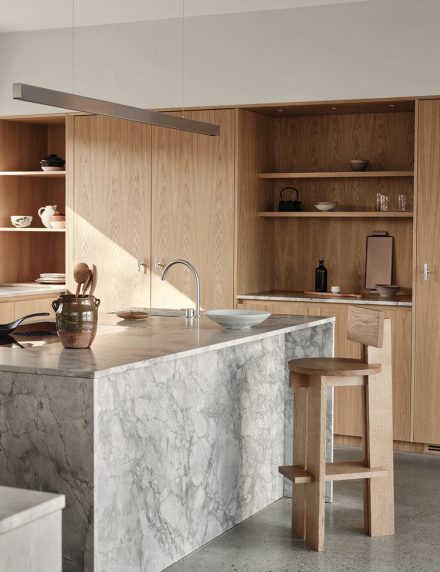
This Japandi-inspired kitchen by Ateliers Jacob celebrates the beauty of natural materials. The Laminam porcelain countertop, in a Pietra di Savoia Perla shade, is composed of minerals and clays fired at very high temperatures; it reproduces the depth of raw stone while remaining free of toxic resins.
The custom cabinetry reveals a beautiful blend of three flagship Ateliers Jacob collections: Lacquer, Oak Wood, and Évoquente, creating an enveloping and balanced visual harmony. The flush-door refrigerator, the absence of handles, and the built-in hood contribute to the purity of the lines and the atmosphere that emanates from the room.
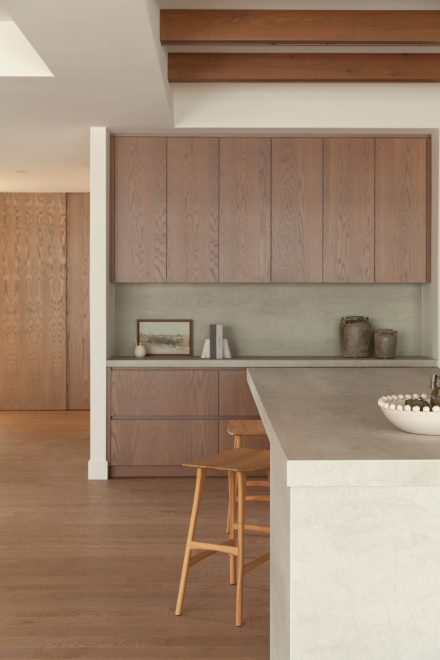
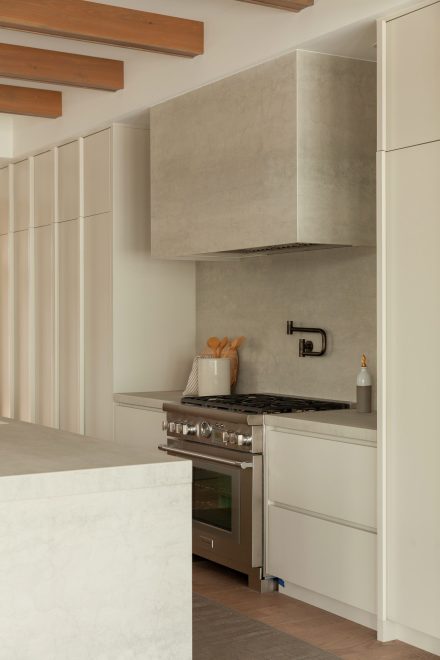
Designed in an architectural villa, this dark oak kitchen by Nordiska Kök exudes a cozy ambiance. The black faucets, pendant lighting, and the subtle contrast between wood and concrete create a sophisticated harmony. Every detail contributes to a sober yet profoundly elegant aesthetic.
In this villa designed by architect Mattias Gabriël, the kitchen is a sophisticated interpretation of the Japandi style. The dark oak adds depth to the home’s minimalist design. The Silestone Lagoon quartz composite countertop, in a subtle and refined gray hue, gives the overall effect a sense of clarity while playing on contrasts, particularly with the wood. The choice of materials like wood, concrete, and quartz, as well as the rigorous lines, contribute to creating a cozy, warm, and cohesive atmosphere. This is Japandi at its most sophisticated: minimalist, yet unmistakably inviting..
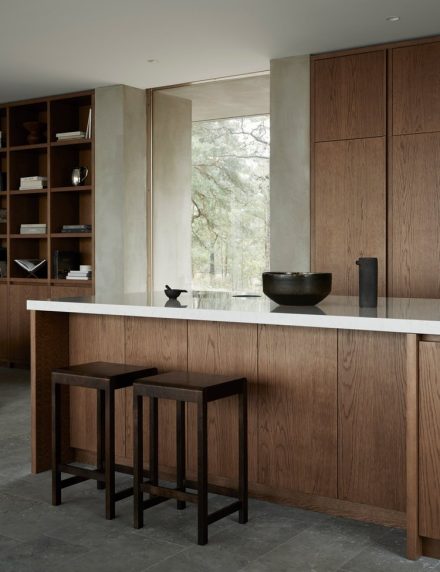
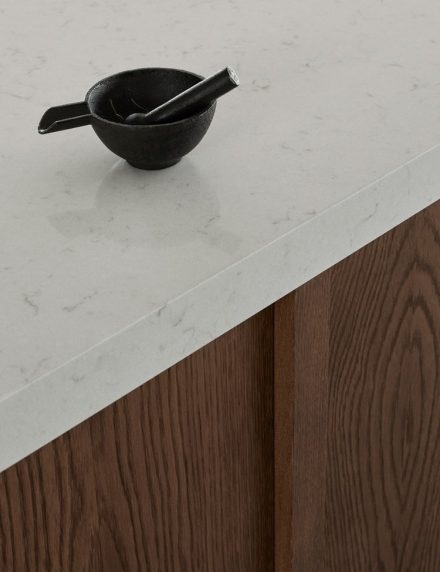
Here are some key elements to remember when creating a Japandi-inspired kitchen:
Countertops and backsplashes: Choose natural stones like quartz or porcelain, with a matte finish. For a seamless aesthetic, the backsplash is often an extension of the countertop.
Cabinetry: Choose handleless, made of light or dark natural wood, often oak, with solid fronts from floor to ceiling. The controlled lines and lack of artifice give the design an intentional and timeless look.
Lighting: Go for pendant lights, made from high-quality materials like washi paper, brass, linen, or black metal. They infuse the space with warmth and character.
Colour palette: Choose neutrals, inspired by nature: sandy beige, light wood, stone gray, sometimes punctuated with charcoal tones. (See our 2025 colour trends article for more ideas.
General layout: Opt for L-shaped or I-shaped, often with a central island. The hood is discreetly integrated, and the faucets are available in matte black or brushed steel.

Embracing Japandi is not just a style choice: it’s a way of thinking, reflecting, and experiencing space. It’s about slowing down, decluttering, and getting back to the essentials. In a kitchen, this state of mind translates into pure lines, beautiful materials, and an enduring sense of calm.
And if the idea of simple, functional, and intentional design resonates, the Ateliers Jacob team is here to help you create a kitchen that doesn’t just look beautiful—but feels right. One that reflects your values, simplifies your days, and quietly transforms your home into a sanctuary.